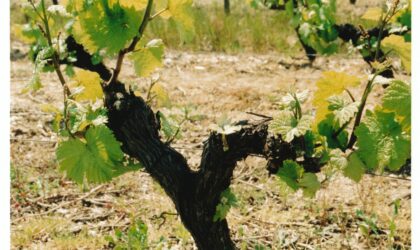


A family history ...
It is in 1890 that the Domaine des Forges was born. Mr Pierre Robineau, grocer and cloth merchant, decided to buy 2 hectares of vineyard. A parcel called “le Clos des Forges” gave its name to the domain.
Since then, 5 generations of winegrowers have succeeded one another in the family, making the Domaine des Forges a historic and recognized house among the Loire Valley estates.
For more than 20 years, Stéphane and Séverine Branchereau have been striving to perpetuate this heritage, between respect for tradition and innovation.
Respect for biodiversity at the heart of the Domain
With the 2019 vintage, Domaine des Forges has the honor of having the highest HVE standard.
Indeed, this is a guarantee of more environmentally friendly approaches. Resulting from the Grenelle de l’Environnement, the level 3 standard, in our domain, is based on 3 indicators including biodiversity, phytosanitary strategy and fertilization management. We are currently using bacterisol, which fertilizes and restores soil balance with a positive impact on the environment and biodiversity.
In addition we use a technique called “sexual confusion”. The principle is simple: we artificially provoke a release of pheromones in the vineyards. These pheromones, normally secreted by the female moths, will release hormones in large quantities, which will disturb the search for the female moths by the males. Thus without reproduction, the birth of larvae will not take place, which consequently will not cause any damage to the vines.
Through the transmission of knowledge of the vine for 5 generations and concerned about ecological issues for future decades, obtaining this distinction is a consecration for the Domaine des Forges in terms of its commitment against soil pollution and global warming, a challenge of the 21st century.
– Stéphane Branchereau, Chief Operating Officer of Domaine des Forges



A tradition that has been passed down for 5 generations

A year in the vineyard

Winter pruning (November to March)
Long and demanding winter work, pruning is essential to the good development of the vine, and allows to control the yields. Short double Guyot and Royat cordon are our main types of pruning.

The vine wakes up in spring
Budburst, flowering, setting, spring is a period full of suspense, where the future vintage and the success of the harvest are already at stake. In a few months, the vine comes out of its torpor and the first fruits already appear, under the vigilant eye of the wine grower.

Disbudding (April to June)
All superfluous branches are manually removed with splitting of each bud in order to limit the yields.
This allows to aerate the harvest and to limit the yields to produce a high quality grape.

The trellising / spiking (April to July)
The vine is raised between several wires and tightened by staples at each post, in order to facilitate the passage of the tractors.
The vine is cut in height and width to control the vegetation.

Leaf removal and green harvesting (June to August)
Leaves are removed manually or mechanically, sunrise side, in order to aerate the grapes and to improve their maturity. Some grapes are removed to limit the yields, and thus improve the quality of the remaining grapes.

Finally, the harvest! (September to November)
Harvest is manual and by several successive selections for the chenin grape variety. Delicate pressing thanks to a pneumatic press. The vinifications are traditional.

Wine maturation (up to one year)
Fermentation and maturation take place in thermo-regulated stainless steel tanks or in our air-conditioned barrel cellar.
Tangential filtration and bottling with low germ content.


